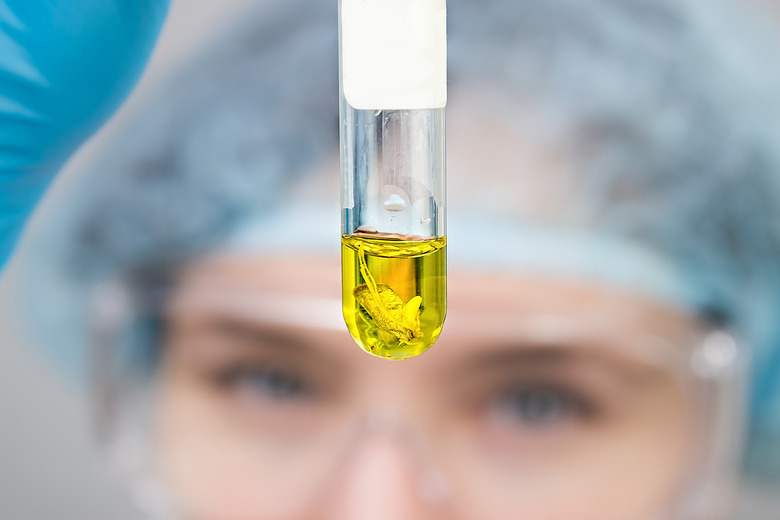How To Calculate The Molarity Of Mixing
When solutions of varying concentrations mix, the concentration of the resulting mixture will be different from either of the starting solutions. Molarity is the measure of concentration used for solutions containing a solute and is defined as moles of solute per liter of solvent. To calculate the new concentration of a solute when two solutions of different amounts and different molarities mix, the amounts of solute, expressed in moles, are together and are placed in a solution with a volume that is the sum of the two solutions mixed.
Step 1
Record the volumes and concentrations of the two starting solutions. You must know how much solute is present before mixing occurs. For example, assume that no chemical reaction occurs upon mixing and that the solutions have the following characteristics. Solution 1 contains 50 mL of 0.15 M HCl and Solution 2 contains 120 mL of 0.05 M HCl.
Step 2
Calculate the number of liters contained in Solutions 1 and 2. Convert the volume of solution in mL to the units of liters (L). According to the example data, there are 50 mL of Solution 1. Divide 50 mL by 1000 mL to yield a volume of 0.05 L. Similarly, the volume of Solution 2, 120 mL, becomes 0.120 L.
Step 3
Calculate the number of moles of HCl contained in Solutions 1 and 2. Moles can be calculated using the following formula: moles = molarity * volume. For the example, moles if HCl in Solution 1 = 0.15 M * 0.05 L = 0.0075 moles. For Solution 2, moles of HCl = 0.05 M * 0.120 L = 0.006 moles. Sum the two values to get the total number of moles. In this example, 0.0075 + 0.006 = 0.0135 moles of HCl.
Step 4
Sum the volumes of solutions to determine the final volume. For the example, Solution 1 is 0.05 L and Solution 2 is 0.120 L. The final volume = 0.05 L + 0.120L = 0.170 L.
Step 5
Calculate the final molarity of the mixed solution using the equation molarity = moles ÷ liter. For the example, the final molarity is 0.0135 moles ÷ 0.170 liters = 0.079 M.
Cite This Article
MLA
Lancaster, Sean. "How To Calculate The Molarity Of Mixing" sciencing.com, https://www.sciencing.com/calculate-molarity-mixing-8433849/. 30 April 2018.
APA
Lancaster, Sean. (2018, April 30). How To Calculate The Molarity Of Mixing. sciencing.com. Retrieved from https://www.sciencing.com/calculate-molarity-mixing-8433849/
Chicago
Lancaster, Sean. How To Calculate The Molarity Of Mixing last modified March 24, 2022. https://www.sciencing.com/calculate-molarity-mixing-8433849/
